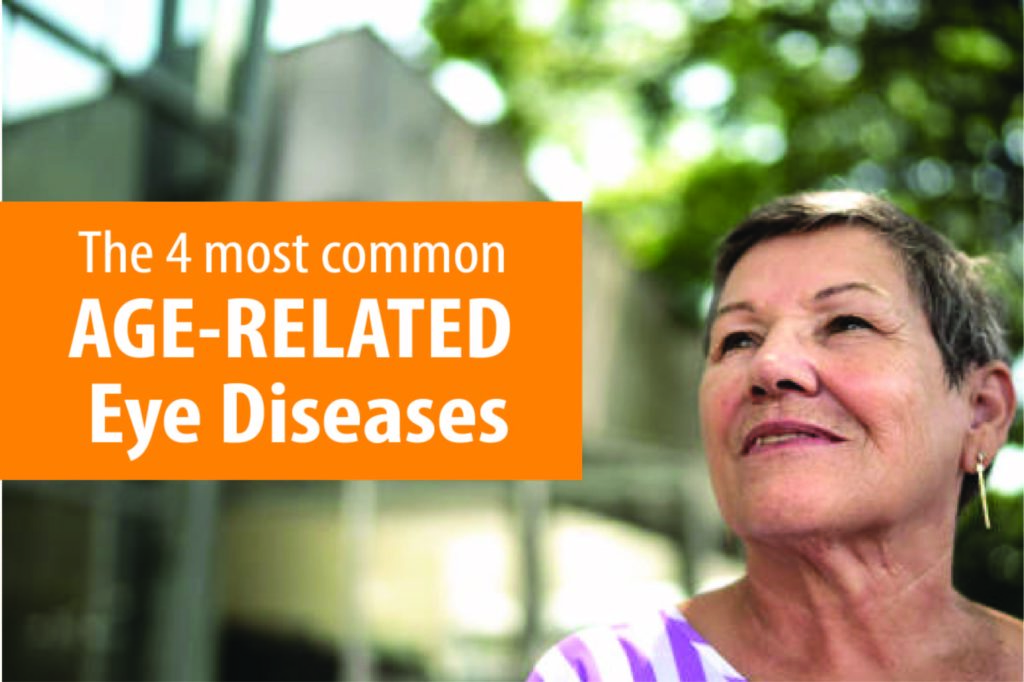As we age, changes to the body occur; our eyes are no different. It is estimated that approximately 30% of the population will develop some form of vision-reducing eye disease by the age of 65. Any sudden changes in vision, ability to perform activities of daily living, reading, or writing, may warrant an eye exam. The most common ocular diseases as we age are cataracts, age-related macular degeneration (AMD), glaucoma, and diabetic retinopathy.
Cataracts are the most common cause of vision loss for those over 40, but can be present as early as birth! They are commonly caused by UV light exposure and clouding of the natural lens of the eye. Cataracts tend to progress slowly, however, changes in blood sugar levels, smoking, and poor diet may cause cataracts to form more quickly. Cataracts are treated with cataract surgery once they are deemed visually significant. Symptoms of cataracts include, but are not limited to: constant blurred or cloudy vision, increased glare, and loss of color vibrancy (think yellow-brown tint!).
Age-related macular degeneration is the leading cause of severe, permanent vision loss for individuals over 50. Risk factors include smoking, age, family history, UV light exposure, high blood pressure, and high cholesterol. Symptoms for age-related macular degeneration include: constant blurred vision, image waviness/distortion, difficulty recognizing familiar faces or reading, and possible blind spot(s) in central vision. AMD is managed with eye vitamins, such as AREDS 2 PreserVision, or with injections if fluid is found in the retina. Glaucoma is one of the leading causes of blindness for people over 60, and occurs when there is damage to the optic nerve. This damage can occur from a variety of sources, but most common sources are elevated pressure within the eye, medications, or underlying systemic disease.
Glaucoma is called “the silent thief of sight” because it often goes undetected until it is too late due to lack of early symptoms. Once glaucoma progresses, patients may notice fuzzy vision and parts of their visual field missing, which can cause difficulty with mobility. Glaucoma is treated through topical eye drops and/or surgery, depending on severity. This disease emphasizes the importance of annual eye exams for early detection and treatment.
Diabetic eye disease is an increasing cause of vision loss, as more and more patients are found to be diabetic. Diabetic retinopathy presenting symptoms are blurred or fluctuating vision, increased floaters, glare, and poor night vision. Diabetic retinopathy can eventually lead to complications and blindness if undetected and untreated. Patients are encouraged to visit their PCP/endocrinologist as directed, but should also visit their eyecare professional at minimum, once per year; more frequently as directed.
Many patients are asymptomatic, and that is why it is so important to get comprehensive eye exams. Ocular health goes far beyond, “I see fine,” or, “I have 20/20 vision.” Changes as we age are inevitable, especially with regard to our eyes. Lifestyle modifications that can be made to reduce your risk of eye disease include: quitting smoking, maintaining a healthy weight, a healthy diet with nutritious food that support eye health, being physically active, wearing sunglasses, reducing high blood pressure/cholesterol, and visiting your eyecare professional yearly.

